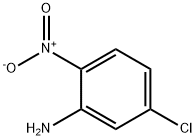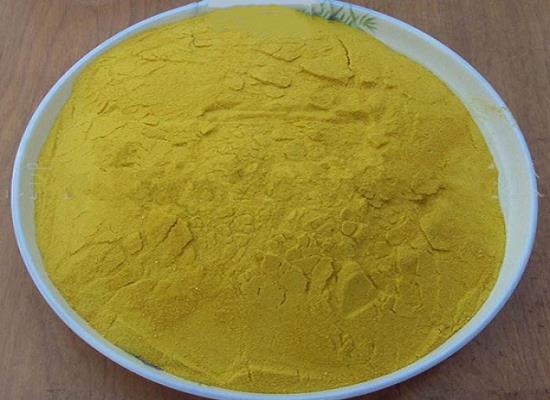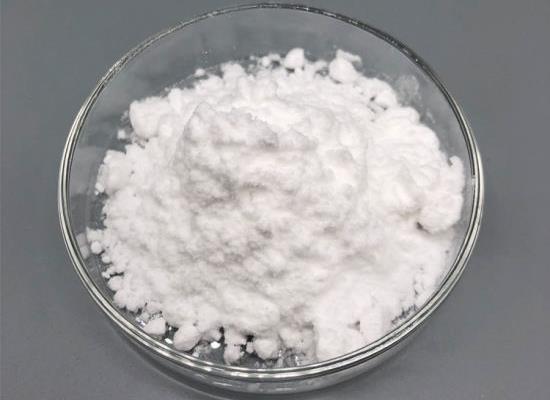5-Chloro-2-nitroaniline: Synthesis and Applications in the Development of Inhibitors
General Description
5-Chloro-2-nitroaniline, with the molecular formula C6H5ClN2O2, is synthesized through a multi-step process involving acylation, nitrification, and hydrolysis. The acylation of 3-chloroaniline with formic acid in organic solvents yields an intermediate product, which is then nitrified using nitric acid and acetic anhydride to introduce the nitro group. Subsequent hydrolysis with sodium hydroxide converts the nitro group to an amino group, resulting in the desired compound. This systematic synthesis ensures precise control over reaction conditions. In medical research, 5-Chloro-2-nitroaniline has shown promise in developing cancer therapeutics by targeting oncogenic miRNAs and inhibiting cell proliferation. Additionally, 5-Chloro-2-nitroaniline has been utilized in the synthesis of potent inhibitors of HIV-1 replication, demonstrating its potential for significant advancements in medical treatments.
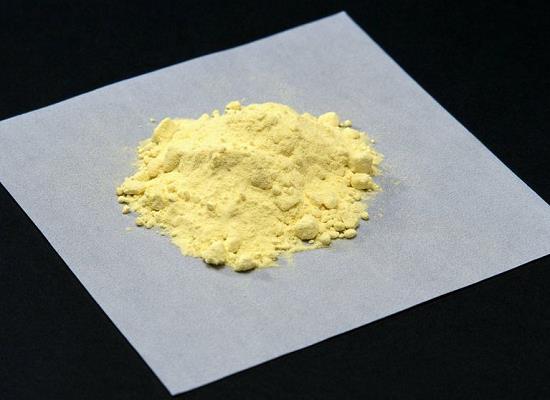
Figure 1. 5-Chloro-2-nitroaniline
Synthesis
5-Chloro-2-nitroaniline, a compound with the molecular formula C6H5ClN2O2, can be prepared through a multi-step synthesis process involving specific solvents and reagents. The preparation method involves acylating 3-chloroaniline with formic acid in an organic solvent, nitrifying the intermediate product with a mixture of nitric acid and acetic anhydride, and finally hydrolyzing the resulting compound using sodium hydroxide solution. To start the synthesis, 3-chloroaniline is first acylated with formic acid in organic solvents such as iso-Pr ether, Pr ether, Bu ether, or benzene at reflux temperature for 1-1.5 hours. This step forms an intermediate product. Next, the intermediate compound is nitrified by treating it with a combination of nitric acid and acetic anhydride at a temperature range of -5 to 10°C for 2.0-2.5 hours. This nitrification reaction introduces the nitro group into the molecule, leading to the formation of 5-chloro-2-nitroaniline. Finally, the nitroaniline product is hydrolyzed with a 20-25% sodium hydroxide solution under reflux conditions for 1-1.5 hours. This hydrolysis step converts the nitro group to an amino group, resulting in the desired compound, 5-Chloro-2-nitroaniline. This method provides a systematic approach to synthesizing 5-Chloro-2-nitroaniline with precise control over reaction conditions and reagent selection, ensuring the purity and yield of the final product. 1
Applications in the development of inhibitors
5-Chloro-2-nitroaniline is a chemical compound that has shown significant applications in the field of medical research, specifically in the development of cancer therapeutics and inhibitors of human immunodeficiency virus type-1 (HIV-1). In the context of cancer research, miRNAs (microRNAs) are crucial regulators of gene expression and have been implicated in various diseases, including cancer. Researchers are currently exploring the targeting of oncogenic miRNAs using small molecules as a potential strategy for developing cancer therapeutics. In this regard, neomycin-bisbenzimidazole conjugates containing 5-Chloro-2-nitroaniline have been developed. These conjugates exhibit high affinity binding to oncogenic miR-27a (with a binding constant, Ka, ranging from 1.2 to 7.4 × 108 M-1). They effectively reduce mature miRNA levels by approximately 65% at a concentration of 5 μM. Moreover, these conjugates readily penetrate cells and localize in both the cytoplasm and the nucleus. Cell cycle analysis has demonstrated that treatment with these conjugates leads to a significant increase in the G0/G1 phase (~15%) and a decrease in the S phase (~7%), indicating inhibition of cell proliferation. This study also emphasizes the importance of optimizing linkers in designing high-affinity ligands for targeting miR-27a. Additionally, 5-Chloro-2-nitroaniline has been utilized in the synthesis of novel benzimidazolones and their analogs, which have been evaluated as inhibitors of HIV-1. These compounds have demonstrated potent inhibitory activity against HIV-1 replication in MT4 cells and minimal cytotoxicity at nanomolar concentrations. Furthermore, some derivatives have been tested against reverse transcriptase enzymes with single amino acid mutations associated with resistance to non-nucleoside reverse transcriptase inhibitors. Molecular modeling techniques have been used to study the varying potencies exhibited by these compounds. Overall, the applications of 5-Chloro-2-nitroaniline in cancer research and HIV-1 inhibition demonstrate its potential as a valuable compound in the development of therapeutics for these diseases. Further exploration and optimization of this compound and its derivatives may lead to significant advancements in medical treatments. 2,3
Reference
1. Preparation of 5-chloro-2-nitroaniline. 2003. Patent Number: CN1418861.
2. Nahar S, Ranjan N, Ray A, Arya DP, Maiti S. Potent inhibition of miR-27a by neomycin-bisbenzimidazole conjugates. Chem Sci. 2015;6(10):5837-5846.
3. Monforte AM, Logoteta P, De Luca L, et al. Novel 1,3-dihydro-benzimidazol-2-ones and their analogues as potent non-nucleoside HIV-1 reverse transcriptase inhibitors. Bioorg Med Chem. 2010;18(4):1702-1710.
Related articles And Qustion
See also
Lastest Price from 5-Chloro-2-nitroaniline manufacturers

US $0.00/KG2025-04-21
- CAS:
- 1635-61-6
- Min. Order:
- 1KG
- Purity:
- 98%min
- Supply Ability:
- 30tons/month
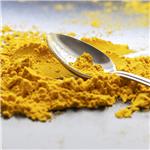
US $4.00/kg2025-04-21
- CAS:
- 1635-61-6
- Min. Order:
- 1kg
- Purity:
- 0.99
- Supply Ability:
- 10000
